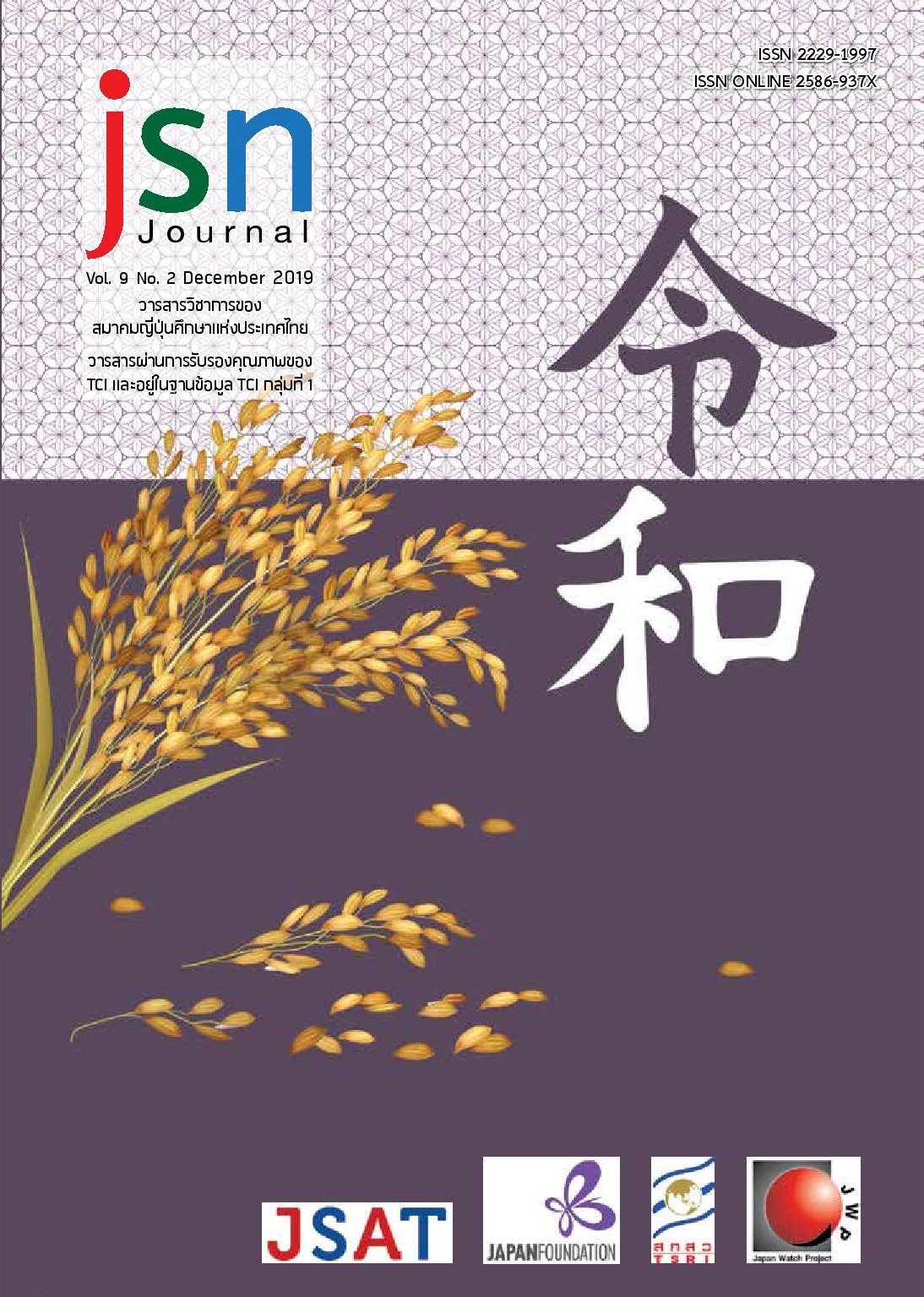Japan’s Countermeasures against Low Birth Rates: Male Involvement in Household Chores and Childrearing
Main Article Content
Abstract
This article aims to explore Japan’s countermeasures against low birth rates, focusing on its public policy that seeks to involve men in household chores and childrearing activity. To grasp the Japanese government’s perspective on low birth rates, the study employs official documents such as policy white papers, laws, government-sponsored printed media or publications while concentrating the period of study on the 1990s henceforth, when the Japanese society has felt the enormity of the issue. Vividly echoed by the “1.57 shock” buzzword worriedly portrayed in the Japanese media, drastic decreases in birth rates for the first time since the end of World War II did put pressure on the Japanese government to put forward policies to address the issue for the first time. Over the past three decades, the Japanese government, despite its inability to root out the problem, has been continually implementing such policies, with the latest initiative being involving men in childrearing. While still unable to completely resolve the issue, the initiative introduced a novelty concept into household chores and childrearing sphere amidst the waves of change.
Article Details
ข้อความและข้อคิดเห็นต่างๆ ในบทความเป็นของผู้เขียนบทความนั้นๆ ไม่ใช่ความเห็นของกองบรรณาธิการหรือของวารสาร jsn Journal
References
ปิยวรรณ อัศวราชันย์. (2560). ผู้หญิงญี่ปุ่น เพื่อเธอ-เท่าเทียม. ปทุมธานี: โรงพิมพ์มหาวิทยาลัยธรรมศาสตร์.
Cabinet office, Government of Japan. (n.d.). Shussei suu- shussei ritsu no suii. Retrieved from https://www8.cao.go.jp/shoushi/shoushika/data/shusshou.html.
Danganpomepome. (2018). Naikakufu no otoohan ga enjyooshi sugite ite kowai. Otoko no reshibi wa tomokaku toshi. Retrieved from https://matome.naver.jp/odai/2149800721836335501
Fukao, Kyoji. (2010). The Structural Causes of Japan’s “Two Lost Decades”. RIETI Highlight 2010 Special Edition., 23–28.
GEBCO (Gender Equality Bureau Cabinet Office). (n.d.). “Otoohan” sapootaa. Retrieved from http://www.gender.go.jp/public/otouhan/supporter/index.html#container
__________. (2016). Ohoohan hajimeyoo kyampen. Retrieved from http://www.gender.go.jp/public/otouhan/
__________. (2017). Greetings from the Get Dads Cooking ambassador. Retrieved from http://www.gender.go.jp/english_contents/pr_act/otouhan/ambassador/index.html
Japan Cabinet office. (2018). Kyodo-Sankaku. No 12 June. Retrieved from http://www.gender.go.jp/public/kyodosankaku/2018/201806/pdf/201806.pdf
MHLW. (2019). Heisei 30 nendo koyoo kintoo kihon cyoosa (Sokuhoo han) o koohyuu shimasu. Retrieved from https://www.mhlw.go.jp/stf/newpage_05049.html
MHLW (Ministry of Health Labor and Welfare). (n.d.). Purojekuto o shiru Ikumen purojekuto towa. Retrieved from https://ikumen-project.mhlw.go.jp/project/about/
MHLW. (n.d.-a). Purojekuto o shiru; Ikumen purojekuto shuhi. Retrieved from https://ikumenproject.mhlw.go.jp/project/concept/
MHLW. (n.d.-b). Ikuji kyuugyoo o toru; Naze ima, dansei no ikuji kyuugyoo na no ka?. Retrieved from https://ikumen-project.mhlw.go.jp/employee/concept/
MHLW. (n.d.-c). Ikuji kyuugyoo o toru; Ikuji kyuugyoo seido towa. Retrieved from https://ikumen-project.mhlw.go.jp/employee/system/
MHLW. (n.d.-d). Dansei no ikukyuu ni torikumu: ikumen suishin kigyoo – ikubosu awaado jyushoosha. Retrieved from https://www.mhlw.go.jp/bunya/koyoukintou/pamphlet/pdf/ikuji_h28_11_02.pdf
MHLW. (n.d.-e). Nihon soo ikubosu sengen dooga (hirogare ikubosu no rin) kookai!!. Retrieved from https://www.mhlw.go.jp/ikubosu/
MIC (Ministry of International Affairs and Communications). (2017). Heisei 28 nen shakai kihon cyoosa seikatsu jikan ni kansuru kekka: Yooyaku. Retrieved from https://www.stat.go.jp/data/shakai/2016/pdf/youyaku2.pdf
Miki, Tomoari. (2017). “Otoohan” “Kantan de iikara papa mo ryoori shiyoo” ga puchi enjyooshita 3 tsu no Riyuu. Huffpost. Retrieved from https://www.huffingtonpost.jp/tomoarimiki/otouhan_dad_b_17145008.html
Nihonkeizai shimbun denshihan. (2019, June 7). 18 nen no shyusseisuu 91.8 man nin, saitei
o kooshin shyusseritsu wa 1.42. Nihonkeizai shimbun. Retrieved from https://www.nikkei.com/article/DGXMZO45809520X00C19A6MM8000/
Public relations office, Government of Japan. (2017). Papa ga Sankyuu kazoku ni sankyuu– sankyuu papa purojekuto. Retrieved from https://www.gov-online.go.jp/useful/article/201603/2.html
The Japan Institute for Labour Policy and Training. (n.d.). Zu 12 sengyoo shufu setai to tomo hataraki setai. Retrieved from https://www.jil.go.jp/kokunai/statistics/timeseries/html/g0212.html
Tsuya, Noriko. (n.d.). Shakai seikatsu kihon choosa kara mita shigoto to katei. Retrieved from http://www.stat.go.jp/data/shakai/2006/ronbun/pdf/ronbun3.pdf


